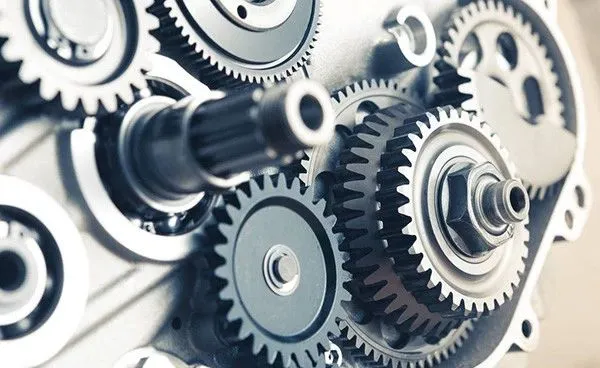There are two main reasons why gear transmissions generate noise:
- Friction During Meshing: When gears mesh, sliding occurs between them, creating frictional forces. The direction of these forces constantly changes during the meshing process, causing impact forces, which lead to noise.
- Vibration-Induced Noise: Vibrations in the gears excite the air inside the gearbox. Since air can compress and expand, it generates sound waves during vibration, leading to noise.
I. Causes of Gear Transmission Noise
Gear transmission noise is influenced by several factors, including assembly precision and manufacturing accuracy.
1. Meshing Impact
When a pair of gears mesh, the gear teeth experience forces, resulting in impact deformation. As new teeth engage, the load on the previously engaged teeth is reduced, allowing them to recover their original shape and transfer tangential acceleration back to the gear body. However, this leads to imperfect contact between the new teeth, causing collisions and generating meshing impact forces. These forces induce vibrations in various directions (axial, radial, circumferential), producing noise.
2. Pulsating Impact
In involute gears, the contact points of the teeth move sequentially along the meshing line. Studies show that because the meshing point’s position changes, the sliding velocity between profiles also varies. It is highest at the start and end of meshing and zero at the pitch point. This variation alters the frictional force, producing pulsating impact forces. The intensity of pulsating impacts correlates with the sliding velocity. As the power transmitted increases, frictional forces decrease while pulsating impacts grow, leading to vibrations and noise.
II. Analysis of Gear Transmission Noise
To reduce noise, it is essential to analyze its types and mechanisms.
1. Types of Noise
- Self-Excited Noise: Generated when meshing forces cause vibrations, producing sound radiation.
- Acceleration Noise: Results from significant impact forces during meshing, accelerating and disturbing other media, leading to sound radiation.
2. Mechanisms of Noise
- In open gear systems, self-excited noise originates from the transmission shaft and wheel body, while acceleration noise arises from tooth impacts.
- In closed gear systems, gear vibrations excite the transmission shaft and support structures, causing noise. Vibrations transmitted through the gearbox walls generate self-excited noise, while air vibrations in the enclosure produce acceleration noise.
- The magnitude of gear transmission noise depends on dynamic excitation during meshing, as well as the structural properties of the gear body and housing.
Key causes of noise include:
- Poor contact precision: Low gear housing and gear system contact accuracy or improper bearing clearance.
- Manufacturing errors: High surface roughness or large shape deviations in gear profiles.
- Design flaws: Unoptimized housing structure or inadequate tooth profile modifications.
III. Controlling Gear Transmission Noise
After analyzing noise causes, effective control measures can be implemented in terms of materials, gear types, and parameters.
1. Materials
To reduce noise, select materials with high damping properties within strength requirements. Non-metallic materials, which reduce vibrations significantly, are ideal for noise control. For example:
- Large gears: Use metallic materials.
- Small gears: Opt for non-metallic materials.
2. Gear Types
The type of gear affects meshing noise. For instance:
- Straight gears: Contact occurs along the gear width, causing abrupt engagement and disengagement.
- Helical gears: Engagement starts at one end of the tooth and gradually spreads. This results in smoother transitions, lower noise levels, and higher load-carrying capacity. Helical gears are preferred for quieter operations.
3. Key Parameters
- Module: Larger modules are better for high-load applications, as they reduce root deformation and noise. Smaller modules are ideal for light loads, improving balancing and reducing noise.
- Diameter and Tooth Count: Adjusting these influences gear stiffness and vibration. Smaller diameters help reduce noise radiation areas.
Controlling Housing Noise
To minimize noise from the gearbox:
- Apply rubber coatings or use high-damping materials.
- Thicken the housing walls to increase stiffness and reduce vibrations.
Conclusion
Gear transmission noise is influenced by factors such as bearing alignment, shaft rigidity, and design parameters. To effectively control noise, it is essential to optimize design, manufacturing, and operational practices, using targeted measures to achieve desired outcomes.
With over 14 years of experience, Beyond gears support the further success of OEM clients with cost-effective manufacturing, processes, and premium service.
Thank you for reading. We are looking forward to serving you with our exceptional gear solutions. #BeyondGears
Read More:


